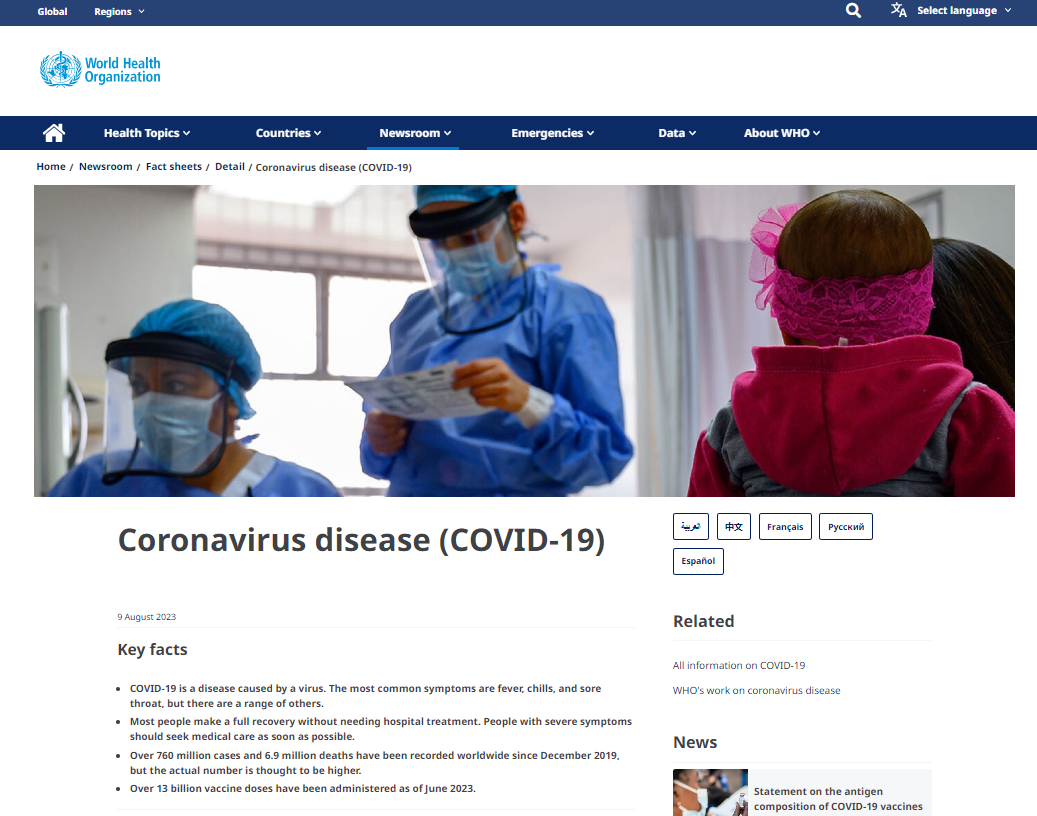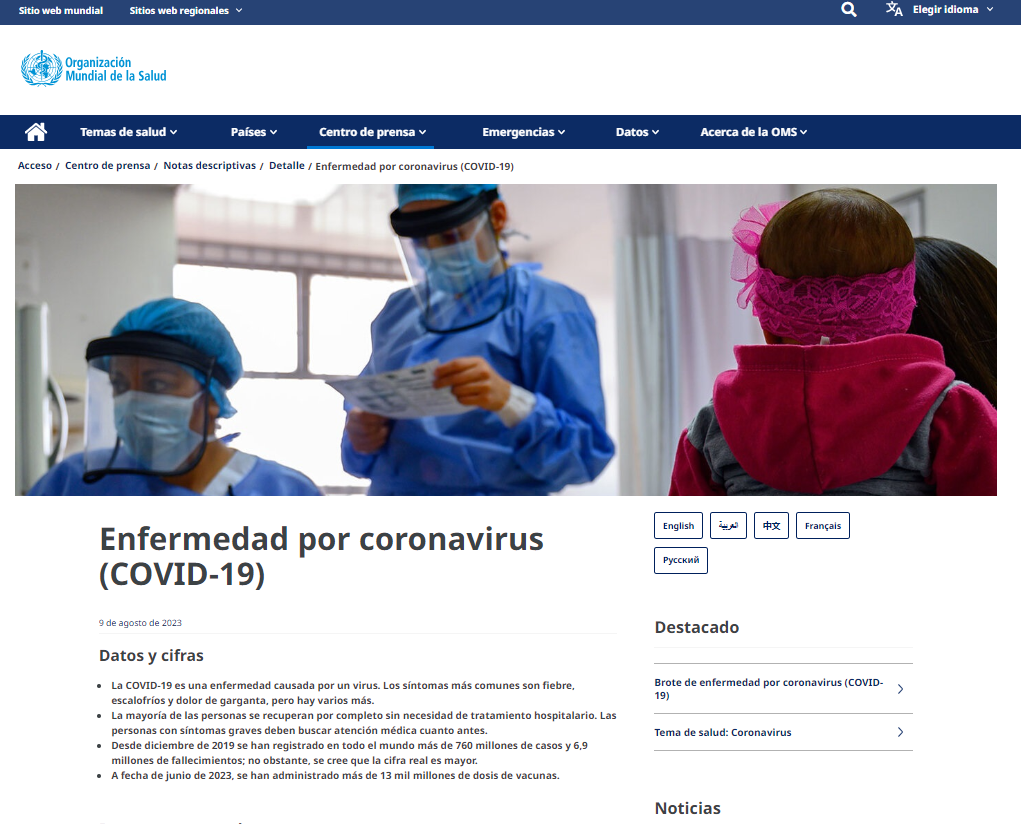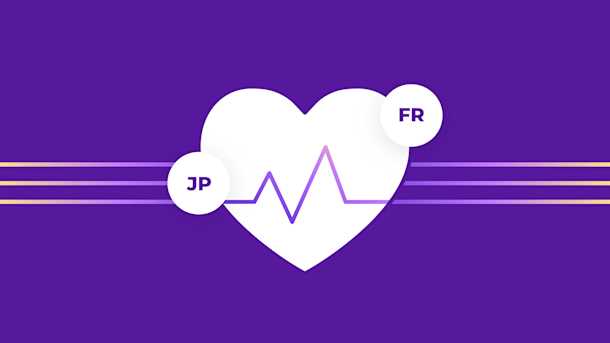Effective communication is one of the key drivers of global health development. However, language barriers remain a significant challenge in the life sciences sector—any slight misunderstanding can lead to major consequences. Inaccurate translations for life sciences content can cause delays in medical research, misunderstandings in patient care, and noncompliance with regulatory requirements.
The demand for global health initiatives is increasing, as is the need for specialized translation services that can keep up with the complex life sciences sector. In fact, the global medical translation service market was valued at $516.5 million in 2023 and is expected to reach $798 million by 2030.
In this article, we’ll delve deeper into the vital role of life sciences translation in promoting global health and best practices for ensuring translation accuracy.
The critical role of life sciences translation in global health
Life sciences translation is a fundamental pillar in the advancement of global health. It unites researchers, healthcare professionals, and patients from different languages and cultures.
The primary role of life sciences translation is to make medical knowledge and research findings available worldwide. Scientific discoveries in one part of the world can greatly impact people living in other parts of the world. However, if medical translation does not happen correctly, this information will not be accessible to those who need it most.
By translating medical journals, research papers, and conference speaker notes, life science translators enable the international medical community to stay informed about the latest developments, collaborate on groundbreaking projects, and accelerate innovation.
Additionally, life sciences translation is vital to the safe and effective use of medical products and devices globally. Pharmaceutical companies and medical device manufacturers must use the right translations on their product labels, instructions for use (IFUs), and patient information leaflets to meet local regulations and guarantee that healthcare professionals properly administer treatments.
Furthermore, accurate life sciences translation powers the success of global public health initiatives like disease outbreak response, vaccination campaigns, and health education programs. The COVID-19 pandemic, for instance, illustrated how the quick translation of public health messages, research outcomes, and vaccine information was crucial in the global fight against the virus.
Translation errors can cause severe adverse events, like wrong dosage, inappropriate use of devices, or misinterpretation of side effects. By partnering with experienced life sciences translators and translation services, companies can reduce these risks and guarantee that people use their products safely and reliably in various markets.
Ensuring accuracy in life sciences translation
Accuracy is the most important aspect of life sciences translation. Inaccuracies in translation can lead to incorrect diagnoses, improper treatments, and even life-threatening situations. According to research, mistranslations resulted in 47 knee surgeries being performed incorrectly in Germany between 2006 and 2007. It’s crucial to prioritize accuracy at every stage of the translation process.
Navigating specialized terminology and regulatory compliance
Medical and scientific language, including specialized terminology, is precise, technical, and constantly evolving. Life sciences translators must have a profound knowledge of these terminologies and remain up-to-date on new terms so that translated content is precise and contextually relevant.
Life sciences translation must also align with very strict regulatory requirements. The pharmaceutical and medical device industries are highly regulated, with rules for labeling, packaging, and patient information. Failure to comply with these regulations can result in costly delays, product recalls, and legal consequences.
Life sciences translators need a combination of linguistic skills and subject matter knowledge to address these problems. Using glossaries, terminology databases, and translation memory can also help them keep translated materials consistent and accurate.
Translation solutions like Smartling undergo evaluation and earn certification for ISO 13485 standards, requirements, and guidelines related to localization services. Smartling’s quality management system is capable of providing high-quality translations in life sciences and medical content and related services, in compliance with ISO 13485:2016.
Maintaining life sciences translation quality: Best practices
Here are some key strategies for ensuring high translation quality of your life sciences content:
- Source text optimization: Make sure that the original content is well-written, clear, and free of ambiguity. Work with subject matter experts to eliminate any technical or scientific terminology that may prove problematic during the translation process.
- Terminology management: Create and maintain a complete glossary of important terms and phrases for the project. Make sure that all translators and reviewers have access to this glossary and use it as a guide throughout the translation process.
- Quality assurance processes: Introduce a multi-phase quality control procedure that involves translation, editing, and proofreading by multiple linguists. Use a combination of human expertise and technological tools, such as translation memory and quality assurance software, to identify and correct errors. Smartling, for instance, offers a combination of human expertise and technology to provide the most accurate life sciences translations.
- Back translation: In the case of important medical documents like informed consent forms or patient information leaflets, organizations should consider back translation to ensure high quality. Back translation is the process of translating text from the target language back into the source language to ensure that it is correct and to spot any errors.
The impact of accurate translations on global health initiatives
The precision of life sciences translation facilitates effective communication and cooperation between researchers, healthcare professionals, and patients for the success of global health programs. By removing language barriers, translation paves the way for knowledge exchange, speeds up medical breakthroughs, and enhances patient care worldwide.
Bridging communication gaps in medical research and pharmaceuticals
Translation bridges communication gaps in medical research and the pharmaceutical industry. Publication of research results and international collaboration on projects is possible only when translators accurately translate scientific papers, clinical trial protocols, and regulatory documents. Mistakes in the translation process can delay drug development and approval processes.
Additionally, nearly 75% of all scientific publications are in English, while this language is the native language of only 7.3% of the world's population. This shows the necessity for correct translations so research is available to a larger audience.
Enhancing patient care across linguistic landscapes
Accurate translations improve patient care in different linguistic environments. Patients who receive medical information in their native language tend to understand it better, comply more readily with treatment, and have better health outcomes. Translation services smooth communication between healthcare providers and patients, enhancing the quality of care.
For instance, during the COVID-19 pandemic, the World Health Organization (WHO) launched a multilingual website to provide critical health information to people worldwide. WHO recognized that multilingual communication is essential for improving global health and ensuring access to information in various languages.

 WHO’s website in Spanish (Source)
WHO’s website in Spanish (Source)
By partnering with experienced language service providers like Smartling, organizations can:
- Accelerate medical research and innovation through seamless knowledge sharing and collaboration.
- Ensure compliance with local regulations and cultural norms to facilitate entry into new markets.
- Improve patient engagement, understanding, and adherence to treatment plans.
- Enhance the effectiveness of public health campaigns and disease outbreak response efforts.
- Contribute to the overall advancement of global health equity and access to quality healthcare.
Investing in professional life sciences translation services is not only a regulatory requirement but also a strategic decision that can significantly impact global health initiatives.
Partnering with Smartling for unparalleled life sciences translation
As clinical research organizations navigate the challenges of global health initiatives, regulatory compliance, and cross-border collaboration, partnering with a trusted language solution provider becomes increasingly crucial.
Smartling is a leading language translation services provider that offers accuracy and speed for the life sciences industry. Having a thorough knowledge of the specific requirements and problems in this sector, Smartling combines modern technology with human expertise to produce excellent results.
Let’s look at Butterfly Network, a pioneer in the point-of-care ultrasound industry that turned to Smartling when it wanted to extend its product to 13 markets in just six weeks. Smartling assisted Butterfly Network in the seamless integration with their application programming interface (API) connections, which helped the company translate 70,000 words in just 10 days. This enabled Butterfly Network to keep its tight schedule and successfully introduce its product in international markets.
Smartling also provides features such as linguistic assets like translation memory, glossary management, and in-context editing, which ensure that organizations accurately translate, culturally adapt, and make every piece of content regulatory compliant.
Expertise at Smartling extends beyond just technology. Our worldwide network of competent native-speaking expert translators has extensive experience in the life sciences field. Smartling's team provides top-quality translations of clinical trial documentation, informed consent forms, product labels, and patient information leaflets that comply with even the most stringent requirements for accuracy, consistency, and clarity.
Book a demo with Smartling today and discover how our comprehensive language translation solutions can help you achieve your global health objectives at scale with unparalleled accuracy and speed.








